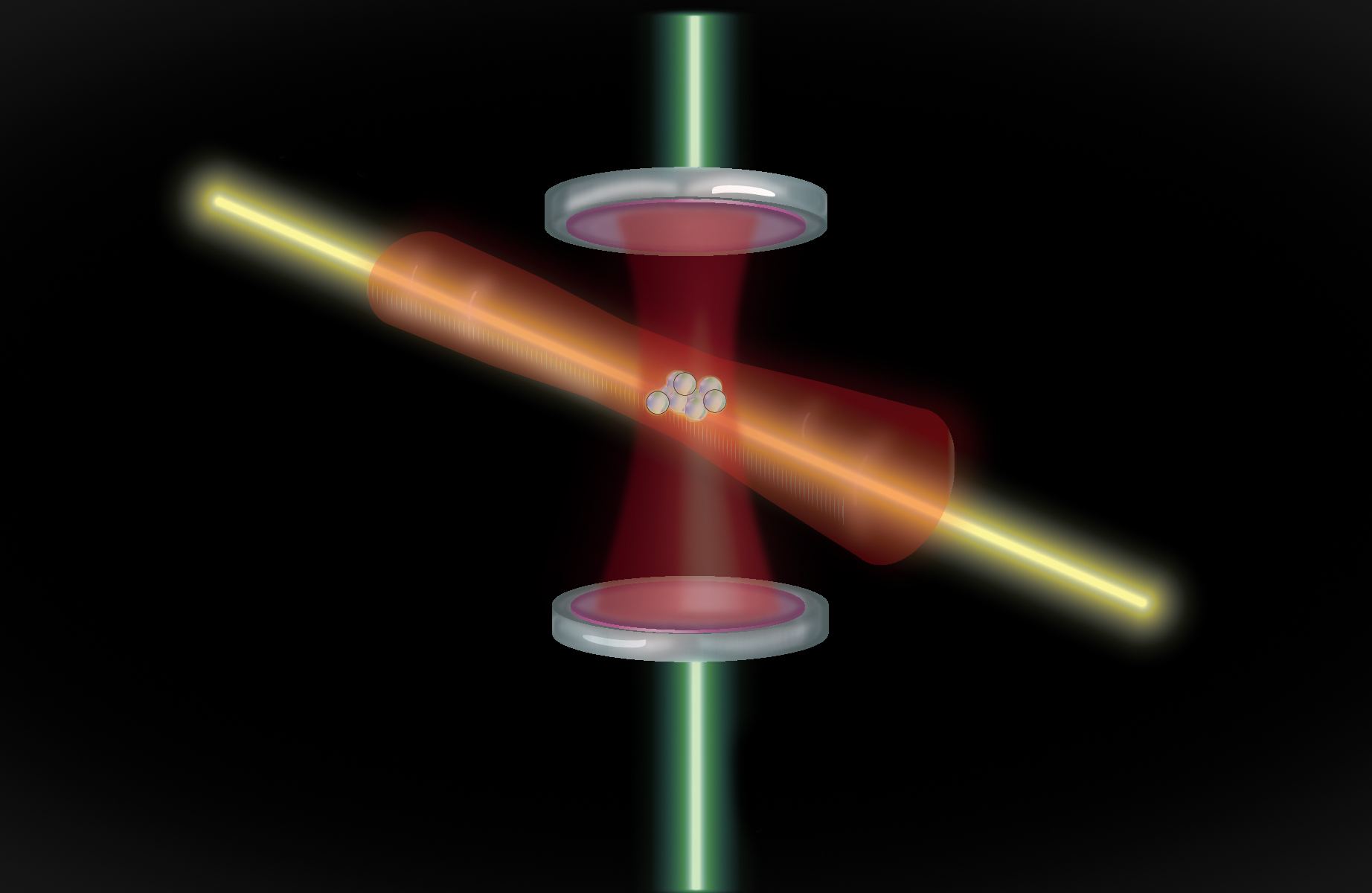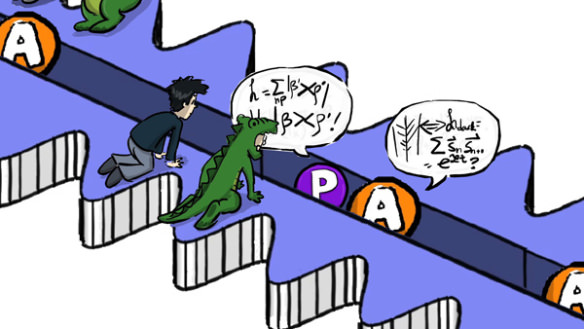Establishing communication with an alien intelligence is one of the news items I, and I’m sure many others, long to see. Since we have started the search for advanced civilisations we have tried numerous ways to detect their transmissions but to date, unsuccessfully. A new paper suggests quantum communication may be the ideal method for interstellar communication. It has many benefits but the challenge is that it would require a receiver over 100km across to pick up a signal. Alas they know we don’t have that tech yet!
Continue reading “If Advanced Civilizations Using Quantum Communications, Is That Why We’ve Never Seen Them?”Thinking About Time Travel Helps Solve Problems in Physics
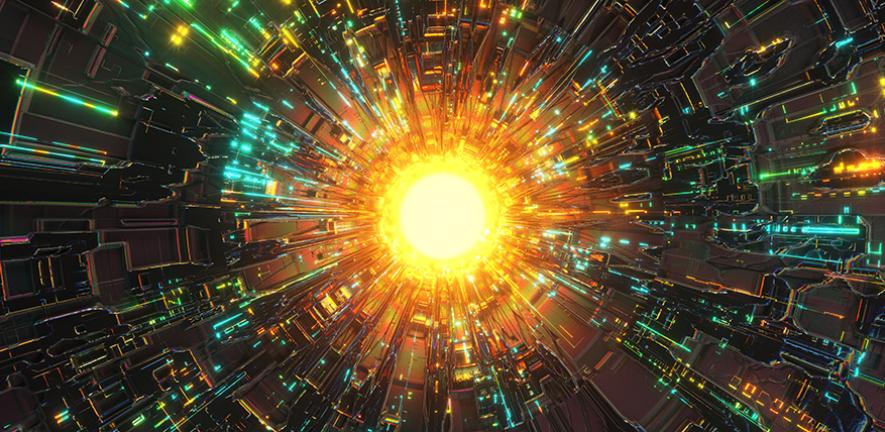
Time travel. We’ve all thought about it at one time or another, and the subject has been explored extensively in science fiction. Once in a while, it is even the subject of scientific research, typically involving quantum mechanics and how the Universe’s four fundamental forces (electromagnetism, weak and strong nuclear forces, and gravity) fit together. In a recent experiment, researchers at the University of Cambridge showed that by manipulating quantum entanglements, they could simulate what could happen if the flow of time were reversed.
Continue reading “Thinking About Time Travel Helps Solve Problems in Physics”Are We Entering the Era of Quantum Telescopes?
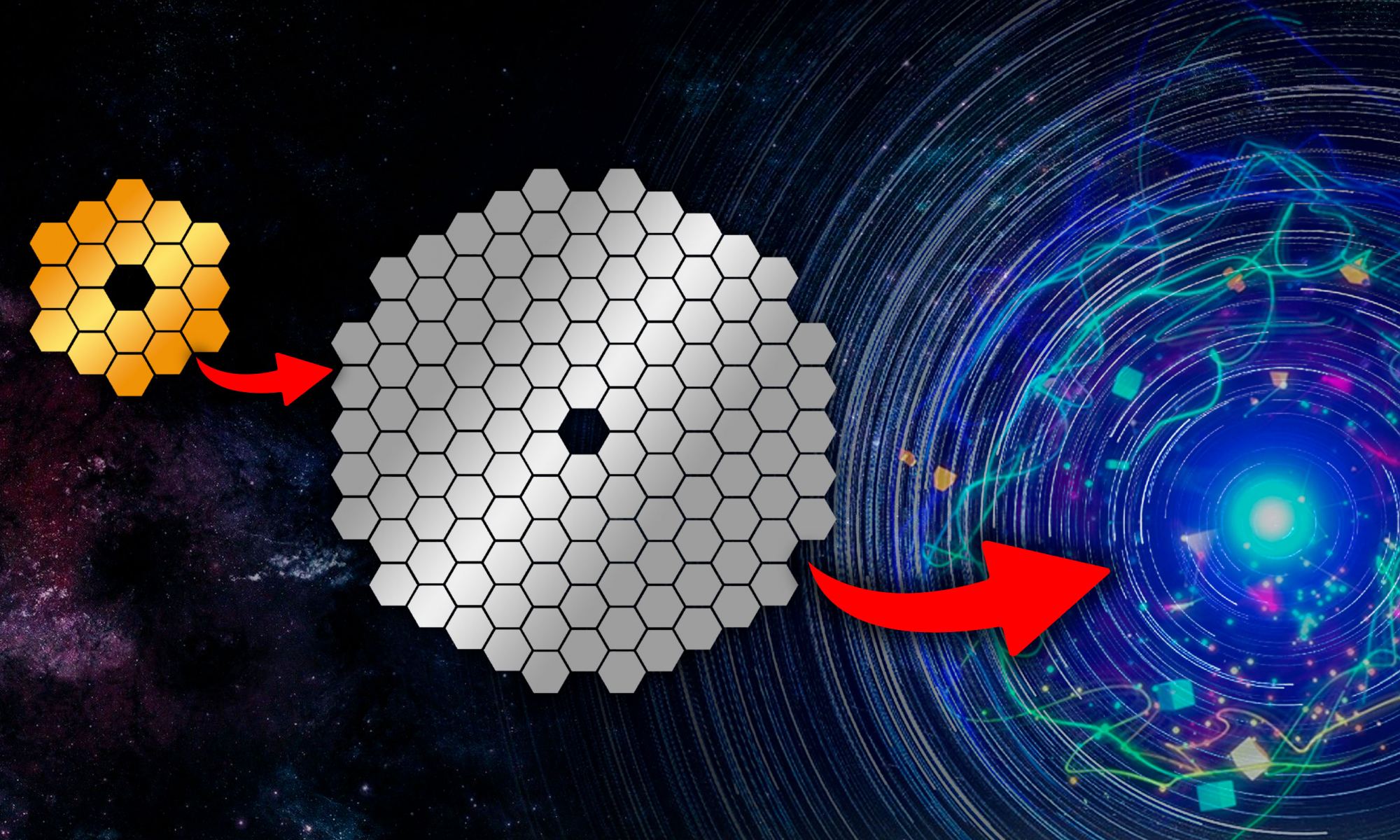
For astronomers, one of the greatest challenges is capturing images of objects and phenomena that are difficult to see using optical (or visible light) telescopes. This problem has been largely addressed by interferometry, a technique where multiple telescopes gather signals, which is then combined to create a more complete picture. Examples include the Event Horizon Telescope, which relies on observatories from around the world to capture the first images of the supermassive black hole (SMBH) at the center of the M87 galaxy, and of Sagittarius A* at the center of the Milky Way.
That being said, classic interferometry requires that optical links be maintained between observatories, which imposes limitations and can lead to drastically increased costs. In a recent study, a team of astrophysicists and theoretical physicists proposed how these limitations could be overcome by relying on quantum mechanics. Rather than relying on optical links, they propose how the principle of quantum entanglements could be used to share photons between observatories. This technique is part of a growing field of research that could lead to “quantum telescopes” someday.
Continue reading “Are We Entering the Era of Quantum Telescopes?”A new way to Confirm Hawking's Idea That Black Holes Give off Radiation

Nothing can escape a black hole. General relativity is very clear on this point. Cross a black hole’s event horizon, and you are forever lost to the universe. Except that’s not entirely true. It’s true according to Einstein’s theory, but general relativity is a classical model. It doesn’t take into account the quantum aspects of nature. For that, you’d need a quantum theory of gravity, which we don’t have. But we do have some ideas about some of the effects of quantum gravity, and one of the most interesting is Hawking radiation.
Continue reading “A new way to Confirm Hawking's Idea That Black Holes Give off Radiation”We Could Detect Alien Civilizations Through Their Interstellar Quantum Communication
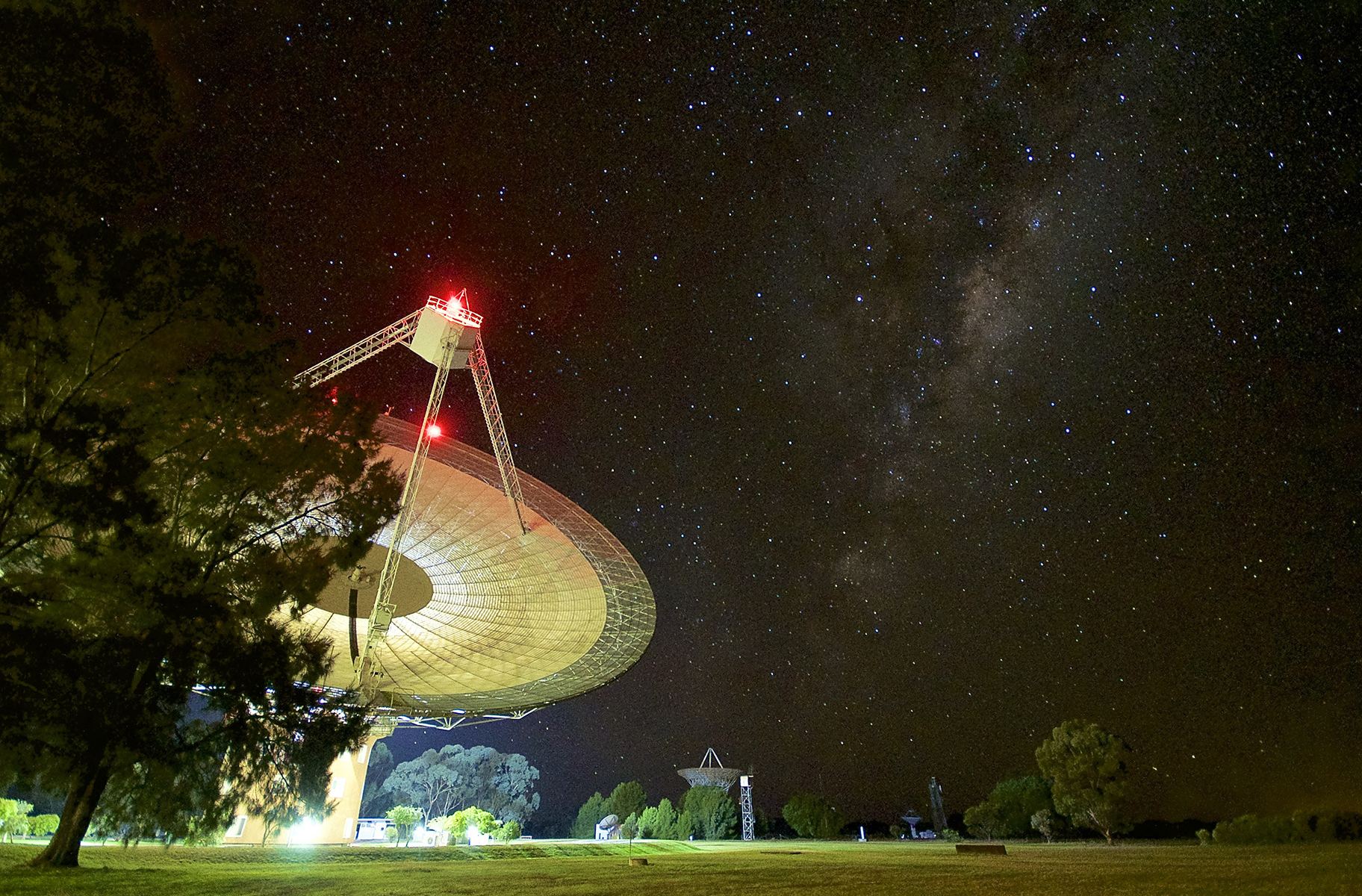
Since the mid-20th century, scientists have been looking for evidence of intelligent life beyond our Solar System. For much of that time, scientists who are engaged in the search for extraterrestrial intelligence (SETI) have relied on radio astronomy surveys to search for signs of technological activity (aka. “technosignatures“). With 4,375 exoplanets confirmed (and counting!) even greater efforts are expected to happen in the near future.
In anticipation of these efforts, researchers have been considering other possible technosignatures that we should be on the lookout for. According to Michael Hippke, a visiting scholar at the UC Berkeley SETI Research Center, the search should also be expanded to include quantum communication. In an age where quantum computing and related technologies are nearing fruition, it makes sense to look for signs of them elsewhere.
Continue reading “We Could Detect Alien Civilizations Through Their Interstellar Quantum Communication”A new Type of Atomic Clock Uses Entangled Atoms. At Most, it Would be off by 100 Milliseconds Since the Beginning of the Universe
Measuring time is about counting steps. Whether it’s the drip-drip of a water clock, the tic-toc of a mechanical clock, or the oscillating crystal of a quartz watch. Any accurate timepiece is built around counting the steps of something regular and periodic. Nothing is perfectly regular, so no clock keeps perfect time, but our timepieces are getting very, very accurate.
Continue reading “A new Type of Atomic Clock Uses Entangled Atoms. At Most, it Would be off by 100 Milliseconds Since the Beginning of the Universe”First Ever Image of Quantum Entanglement
During the 1930s, venerable theoretical physicist Albert Einstein returned to the field of quantum mechanics, which his theories of relativity helped to create. Hoping to develop a more complete theory of how particles behave, Einstein was instead horrified by the prospect of quantum entanglement – something he described as “spooky action at a distance”.
Despite Einstein’s misgivings, quantum entanglement has gone on to become an accepted part of quantum mechanics. And now, for the first time ever, a team of physicists from the University of Glasgow took an image of a form of quantum entanglement (aka. Bell entanglement) at work. In so doing, they managed to capture the first piece of visual evidence of a phenomenon that baffled even Einstein himself.
Continue reading “First Ever Image of Quantum Entanglement”Physicists Take Big Step Towards Quantum Computing and Encryption with new Experiment

Quantum entanglement remains one of the most challenging fields of study for modern physicists. Described by Einstein as “spooky action at a distance”, scientists have long sought to reconcile how this aspect of quantum mechanics can coexist with classical mechanics. Essentially, the fact that two particles can be connected over great distances violates the rules of locality and realism.
Formally, this is a violation of Bell’s Ineqaulity, a theory which has been used for decades to show that locality and realism are valid despite being inconsistent with quantum mechanics. However, in a recent study, a team of researchers from the Ludwig-Maximilian University (LMU) and the Max Planck Institute for Quantum Optics in Munich conducted tests which once again violate Bell’s Inequality and proves the existence of entanglement.
Their study, titled “Event-Ready Bell Test Using Entangled Atoms Simultaneously Closing Detection and Locality Loopholes“, was recently published in the Physical Review Letters. Led by Wenjamin Rosenfeld, a physicist at LMU and the Max Planck Institute for Quantum Optics, the team sought to test Bell’s Inequality by entangling two particles at a distance.
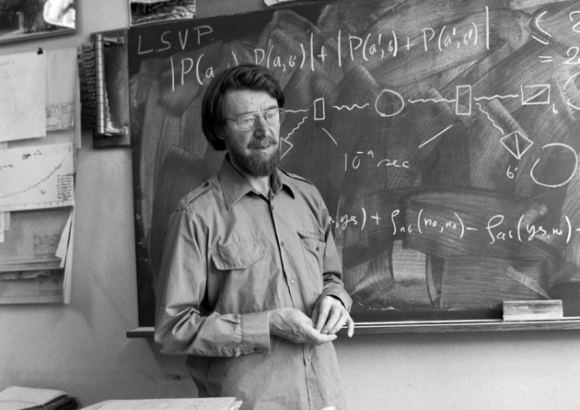
Bell’s Inequality (named after Irish physicist John Bell, who proposed it in 1964) essentially states that properties of objects exist independent of being observed (realism), and no information or physical influence can propagate faster than the speed of light (locality). These rules perfectly described the reality we human beings experience on a daily basis, where things are rooted in a particular space and time and exist independent of an observer.
However, at the quantum level, things do not appear to follow these rules. Not only can particles be connected in non-local ways over large distances (i.e. entanglement), but the properties of these particles cannot be defined until they are measured. And while all experiments have confirmed that the predictions of quantum mechanics are correct, some scientists have continued to argue that there are loopholes that allow for local realism.
To address this, the Munich team conducted an experiment using two laboratories at LMU. While the first lab was located in the basement of the physics department, the second was located in the basement of the economics department – roughly 400 meters away. In both labs, teams captured a single rubidium atom in an topical trap and then began exciting them until they released a single photon.
As Dr. Wenjamin Rosenfeld explained in an Max Planck Institute press release:
“Our two observer stations are independently operated and are equipped with their own laser and control systems. Because of the 400 meters distance between the laboratories, communication from one to the other would take 1328 nanoseconds, which is much more than the duration of the measurement process. So, no information on the measurement in one lab can be used in the other lab. That’s how we close the locality loophole.”
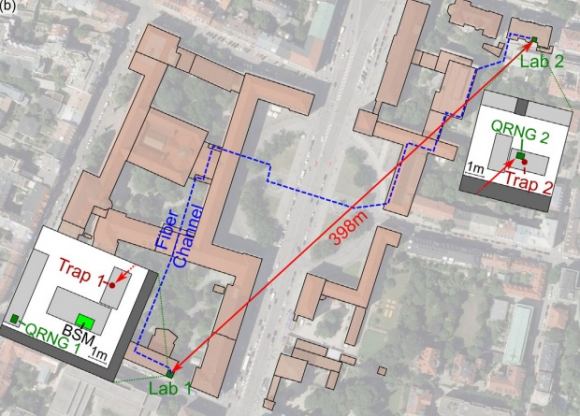
Once the two rubidium atoms were excited to the point of releasing a photon, the spin-states of the rubidium atoms and the polarization states of the photons were effectively entangled. The photons were then coupled into optical fibers and guided to a set-up where they were brought to interference. After conducting a measurement run for eight days, the scientists were able to collected around 10,000 events to check for signs entanglement.
This would have been indicated by the spins of the two trapped rubidium atoms, which would be pointing in the same direction (or in the opposite direction, depending on the kind of entanglement). What the Munich team found was that for the vast majority of the events, the atoms were in the same state (or in the opposite state), and that there were only six deviations consistent with Bell’s Inequality.
These results were also statistically more significant than those obtained by a team of Dutch physicists in 2015. For the sake of that study, the Dutch team conducted experiments using electrons in diamonds at labs that were 1.3 km apart. In the end, their results (and other recent tests of Bell’s Inequality) demonstrated that quantum entanglement is real, effectively closing the local realism loophole.
As Wenjamin Rosenfeld explained, the tests conducted by his team also went beyond these other experiments by addressing another major issue. “We were able to determine the spin-state of the atoms very fast and very efficiently,” he said. “Thereby we closed a second potential loophole: the assumption, that the observed violation is caused by an incomplete sample of detected atom pairs”.
By obtaining proof of the violation of Bell’s Inequality, scientists are not only helping to resolve an enduring incongruity between classical and quantum physics. They are also opening the door to some exciting possibilities. For instance, for years, scientist have anticipated the development of quantum processors, which rely on entanglements to simulate the zeros and ones of binary code.
Computers that rely on quantum mechanics would be exponentially faster than conventional microprocessors, and would ushering in a new age of research and development. The same principles have been proposed for cybersecurity, where quantum encryption would be used to cypher information, making it invulnerable to hackers who rely on conventional computers.
Last, but certainly not least, there is the concept of Quantum Entanglement Communications, a method that would allow us to transmit information faster than the speed of light. Imagine the possibilities for space travel and exploration if we are no longer bound by the limits of relativistic communication!
Einstein wasn’t wrong when he characterized quantum entanglements as “spooky action”. Indeed, much of the implications of this phenomena are still as frightening as they are fascinating to physicists. But the closer we come to understanding it, the closer we will be towards developing an understanding of how all the known physical forces of the Universe fit together – aka. a Theory of Everything!
Further Reading: LMU, Physical Review Letters
Quantum Entanglement Explained
Confused by how particles can be in two places at once? Wondering how particles can instantly communicate with each other no matter what the distance? Quantum physics is a field of study that defies common sense at every turn, and quantum entanglement might lead the way in the defying common sense department. Entanglement is the unusual behavior of elementary particles where they become linked so that when something happens to one, something happens to the other; no matter how far apart they are. This bizarre behavior of particles that become inextricably linked together is what Einstein supposedly called “spooky action at a distance.”
This new video from PHD Comics provides a combination of live action and animation to try to explain entanglement.
“Not surprisingly, it was really hard to draw this video,” says animator Jorge Cham. “How do you depict something that has never existed before? And more importantly, do you draw alligators differently from crocodiles?”
Yes, that sentence actually makes sense when it comes to entanglement. And the advice at the end of the video from physicist Jeff Kimble is applicable to entanglement — and life in general — as well: “If you know what you’re doing, don’t do it…”
Could Particle ‘Spooky Action’ Define The Nature Of Gravity?

Quantum physics is a fascinating yet complicated subject to understand, and one of the things that freaks out physics students every is the concept of entanglement. That occurs when physicists attempt to measure the state of a particle and that affects the state of another particle instantly. (In reality, the particles are in multiple states — spinning in multiple directions, for example — and can only be said to be in one state or another when they are measured.)
“Spooky action at a distance” is how Albert Einstein reportedly referred to it. Here’s the new bit about this: Julian Sonner, a senior postdoctoral researcher at the Massachusetts Institute of Technology, led research showing that when two of these quarks are created, string theory creates a wormhole linking the quarks.
According to MIT, this could help researchers better understand the link between gravity (which takes place on a large scale) to quantum mechanics (which takes place on a very tiny scale). As MIT puts it, up to now it’s been very hard for physicists to “explain gravity in quantum-mechanical terms”, giving rise to a preoccupation of coming up with a single unifying theory for the universe. No luck yet, but many people believe it exists.

“There are some hard questions of quantum gravity we still don’t understand, and we’ve been banging our heads against these problems for a long time,” Sonner stated. “We need to find the right inroads to understanding these questions.”
Quantum entanglement sounds so foreign to our experience because it appears to exceed the speed of light, which violates Einstein’s general relativity. (The speed limit is still being tested, of course, which is why scientists were so excited when it appeared particles were moving faster than light in a 2011 experiment that was later debunked due to a faulty sensor.)
Anyway, this is how the new research proceeded:
– Sonner examined the work of Juan Maldacena of the Institute for Advanced Study and Leonard Susskind of Stanford University. The physicists were looking at how entangled black holes would behave. “When the black holes were entangled, then pulled apart, the theorists found that what emerged was a wormhole — a tunnel through space-time that is thought to be held together by gravity. The idea seemed to suggest that, in the case of wormholes, gravity emerges from the more fundamental phenomenon of entangled black holes,” MIT stated.
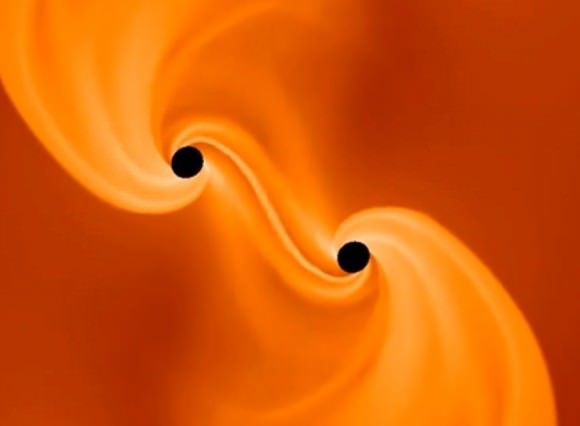
– Sonner then set about to create quarks to see if he could watch what happens when two are entangled with each other. Using an electric field, he was able to catch pairs of particles coming out of a vacuum environment with a few “transient” particles in it.
– Once he caught the particles, he mapped them in terms of space-time (four-dimensional space). Note: gravity is believed to be the fifth dimension because it can bend space-time, as you can see in these images of galaxies below.
– Sonner then tried to figure out what would happen in the fifth dimension when quarks were entangled in the fourth dimension, using a string theory concept called holographic duality. “While a hologram is a two-dimensional object, it contains all the information necessary to represent a three-dimensional view. Essentially, holographic duality is a way to derive a more complex dimension from the next lowest dimension,” MIT stated.
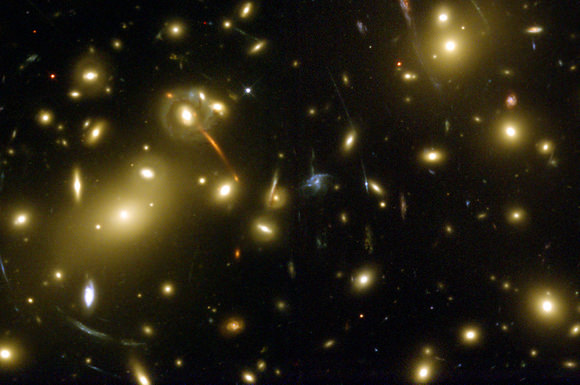
– And it was under holographic duality that Sonner found a wormhole would be created. The implication is that gravity itself may come out of entanglement of these particles, and that the bending we see in the universe would also be due to the entanglement.
“It’s the most basic representation yet that we have where entanglement gives rise to some sort of geometry,” Sonner stated. “What happens if some of this entanglement is lost, and what happens to the geometry? There are many roads that can be pursued, and in that sense, this work can turn out to be very helpful.”
You can view the research in Physical Review Letters.


